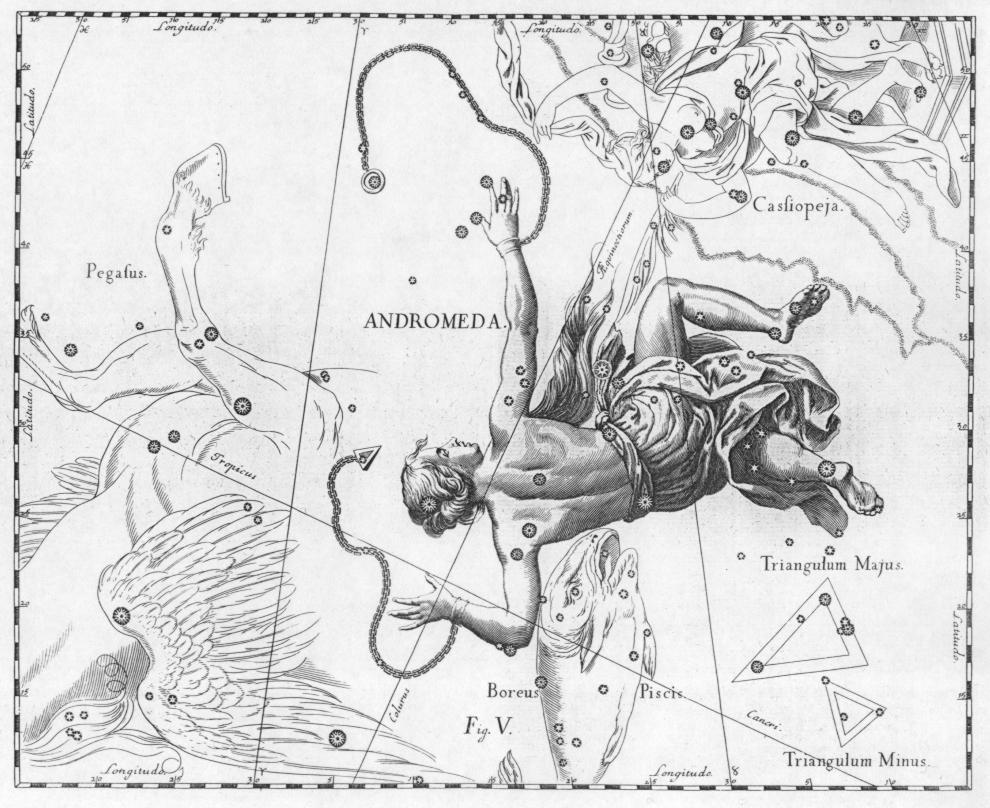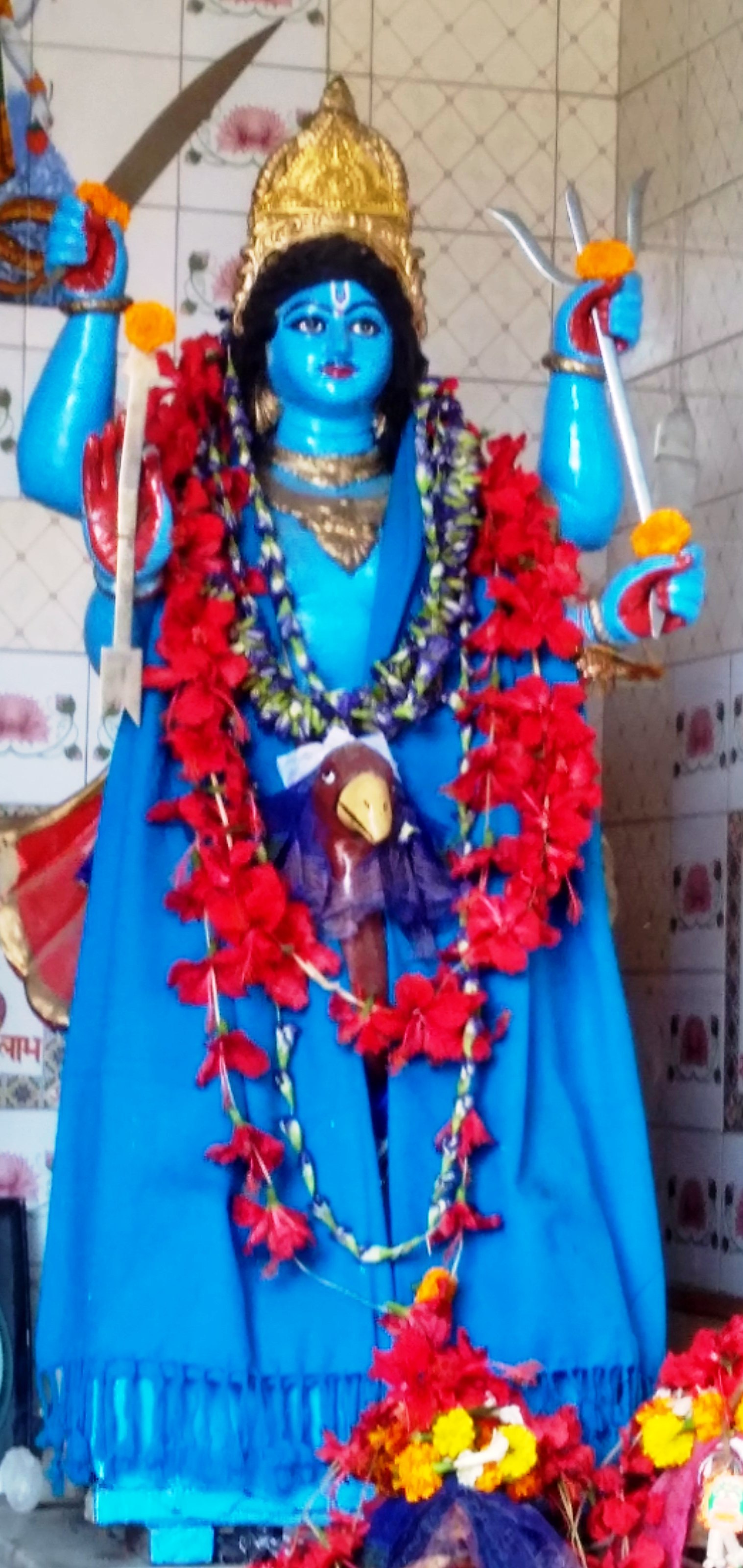|
Uttara Bhādrapadā
Uttara Bhādrapadā or Uttṛṭṭāti (Devanagari: उत्तरभाद्रपदा) is the twenty-sixth nakshatra in Hindu astrology, corresponding to γ Pegasi and α Andromedae. It is ruled by Shani, the deity identified with the planet Saturn. Under the beliefs of electional astrology, Uttara Bhādrapadā is a Fixed constellation, meaning that while it is prominent, it is a good time to build houses, found communities or engage in other activities related to permanence, stability and structure.Dennis M. Harness. "The Nakshatras: The Lunar Mansions of Vedic Astrology". Lotus Press: 1999. . p. 113. Uttara Bhādrapadā is represented by dualistic imagery, often two legs of a bed. Other common symbols include a two-headed man, or twins. The Ahirbudhnya, a serpentine or draconian creature, is the deity which oversees Uttara Bhādrapadā. Male Natives: Physical features: Most attractive and innocent looking person. There is an inherent magnetically force in his look ... [...More Info...] [...Related Items...] OR: [Wikipedia] [Google] [Baidu] |
Andromeda Constellation Map (1)
Andromeda most commonly refers to: * Andromeda (mythology), a princess from Greek mythology * Andromeda (constellation), a region of the Earth's night sky * The Andromeda Galaxy, an astronomical object within the constellation Andromeda may also refer to: Artistic works Fine art * ''Andromeda Chained to the Rocks'', a 1631 painting by Rembrandt * '' Andromeda (Rodin)'', an 1889 sculpture by Auguste Rodin Literature * ''Andromeda'' (play), lost mythological tragedy by Euripides from 412 BC * ''Andromeda'' (novel), 1957 science fiction novel by Ivan Yefremov * ''The Andromeda'' Strain, 1969 techno-thriller novel by Michael Crichton * The Andromeda Evolution, 2019 science fiction novel by Daniel H. Wilson, sequel to The Andromeda Strain Music * Andromeda (English band), a 1960s psychedelic rock band from Britain, or their eponymous debut album * Andromeda (Swedish band), a 2000s progressive metal band from Sweden * Love Outside Andromeda, a 2000s indie rock band ... [...More Info...] [...Related Items...] OR: [Wikipedia] [Google] [Baidu] |
Devanagari
Devanagari ( ; , , Sanskrit pronunciation: ), also called Nagari (),Kathleen Kuiper (2010), The Culture of India, New York: The Rosen Publishing Group, , page 83 is a left-to-right abugida (a type of segmental writing system), based on the ancient ''Brāhmī'' script, used in the northern Indian subcontinent. It was developed and in regular use by the 7th century CE. The Devanagari script, composed of 47 primary characters, including 14 vowels and 33 consonants, is the fourth most widely adopted writing system in the world, being used for over 120 languages.Devanagari (Nagari) , Script Features and Description, SIL International (2013), United States The |
Nakshatra
Nakshatra ( sa, नक्षत्रम्, translit=Nakṣatram) is the term for lunar mansion in Hindu astrology and Indian Astronomy. A nakshatra is one of 27 (sometimes also 28) sectors along the ecliptic. Their names are related to a prominent star or asterisms in or near the respective sectors. The starting point for the nakshatras according to Vedas is "Krittika" (it has been argued because the Pleiades may have started the year at the time the Vedas were compiled, presumably at the vernal equinox), but, in more recent compilations, the start of the nakshatras list is the point on the ecliptic directly opposite to the star Spica called ''Chitrā'' in Sanskrit, which would be Ashwinī, a part of the modern constellation Aries, and these compilations therefore may have been compiled during the centuries when the sun was passing through the area of the constellation Aries at the time of the vernal equinox. This version may have been called ''Meshādi'' or the " star ... [...More Info...] [...Related Items...] OR: [Wikipedia] [Google] [Baidu] |
Hindu Astrology
Jyotisha or Jyotishya (from Sanskrit ', from ' “light, heavenly body" and ''ish'' - from Isvara or God) is the traditional Hindu system of astrology, also known as Hindu astrology, Indian astrology and more recently Vedic astrology. It is one of the six auxiliary disciplines in Hinduism, that is connected with the study of the Vedas. The '' Vedanga Jyotisha'' is one of the earliest texts about astronomy within the Vedas. Some scholars believe that the horoscopic astrology practiced in the Indian subcontinent came from Hellenistic influences, however, this is a point of intense debate and other scholars believe that Jyotisha developed independently although it may have interacted with Greek astrology. Following a judgement of the Andhra Pradesh High Court in 2001 which favoured astrology, some Indian universities now offer advanced degrees in Hindu astrology. The scientific consensus is that astrology is a pseudoscience. Etymology Jyotisha, states Monier-Williams, is ro ... [...More Info...] [...Related Items...] OR: [Wikipedia] [Google] [Baidu] |
Gamma Pegasi
Gamma Pegasi is a star in the constellation of Pegasus, located at the southeast corner of the asterism known as the Great Square. It has the formal name Algenib ; the Bayer designation Gamma Pegasi is Latinized from γ Pegasi and abbreviated Gamma Peg or γ Peg. The average apparent visual magnitude of +2.84 makes this the fourth-brightest star in the constellation. The distance to this star has been measured using the parallax technique, yielding a value of roughly . Nomenclature ''Gamma Pegasi'' is the star's Bayer designation. Although it also had the traditional name ''Algenib'', this name was also used for Alpha Persei. In 2016, the International Astronomical Union organized a Working Group on Star Names (WGSN) to catalog and standardize proper names for stars. The WGSN's first bulletin of July 2016 included a table of the first two batches of names approved by the WGSN; which included ''Algenib'' for this star (Alpha Persei was given the name ''Mirfak''). The ... [...More Info...] [...Related Items...] OR: [Wikipedia] [Google] [Baidu] |
Pegasus (constellation)
Pegasus is a constellation in the northern sky, named after the winged horse Pegasus in Greek mythology. It was one of the 48 constellations listed by the 2nd-century astronomer Ptolemy, and is one of the 88 constellations recognised today. With an apparent magnitude varying between 2.37 and 2.45, the brightest star in Pegasus is the orange supergiant Epsilon Pegasi, also known as Enif, which marks the horse's muzzle. Alpha (Markab), Beta (Scheat), and Gamma (Algenib), together with Alpha Andromedae (Alpheratz) form the large asterism known as the ''Square of Pegasus''. Twelve star systems have been found to have exoplanets. 51 Pegasi was the first Sun-like star discovered to have an exoplanet companion. Mythology The Babylonian constellation IKU (field) had four stars of which three were later part of the Greek constellation ''Hippos'' (Pegasus). Pegasus, in Greek mythology, was a winged horse with magical powers. One myth regarding his powers says that his hooves dug o ... [...More Info...] [...Related Items...] OR: [Wikipedia] [Google] [Baidu] |
Alpha Andromedae
Alpha Andromedae (α Andromedae, abbreviated Alpha And or α And), officially named Alpheratz , is 97 light-years from the Sun and is the brightest star in the constellation of Andromeda when Beta Andromedae undergoes its periodical dimming. Immediately northeast of the constellation of Pegasus, it is the upper left star of the Great Square of Pegasus. Although it appears to the naked eye as a single star, with overall apparent visual magnitude +2.06, it is actually a binary system composed of two stars in close orbit. The chemical composition of the brighter of the two stars is unusual as it is a mercury-manganese star whose atmosphere contains abnormally high levels of mercury, manganese, and other elements, including gallium and xenon.Alpheratz, Kaler Star2/14/2013 It is the brightest mercury-manganese star known. Nomenclature ''α Andromedae'' ( Latinisation of names, Latinised to ''Alpha Andromedae'') is the star's Bayer designation. Ptolemy considered t ... [...More Info...] [...Related Items...] OR: [Wikipedia] [Google] [Baidu] |
Andromeda (constellation)
Andromeda is one of the 48 constellations listed by the 2nd-century Greco-Roman astronomer Ptolemy, and one of the 88 modern constellations. Located in the northern celestial hemisphere, it is named for Andromeda, daughter of Cassiopeia, in the Greek myth, who was chained to a rock to be eaten by the sea monster Cetus. Andromeda is most prominent during autumn evenings in the Northern Hemisphere, along with several other constellations named for characters in the Perseus myth. Because of its northern declination, Andromeda is visible only north of 40° south latitude; for observers farther south, it lies below the horizon. It is one of the largest constellations, with an area of 722 square degrees. This is over 1,400 times the size of the full moon, 55% of the size of the largest constellation, Hydra, and over 10 times the size of the smallest constellation, Crux. Its brightest star, Alpha Andromedae, is a binary star that has also been counted as a part of Pegasu ... [...More Info...] [...Related Items...] OR: [Wikipedia] [Google] [Baidu] |
Shani
Shani ( sa, शनि, ), or Shanaishchara ( sa, शनैश्चर, ), refers to the divine personification of the planet Saturn in Hinduism, and is one of the nine heavenly objects (Navagraha) in Hindu astrology. Shani is also a male Hindu deity in the Puranas, whose iconography consists of a black figure carrying a sword or danda (sceptre) and sitting on a Crow. He is the god of '' Karma (deeds), ''justice, and retribution and delivers results depending upon one's thoughts, speech, and deeds (karma). Shani is the controller of longevity, misery, sorrow, old age, discipline, restriction, responsibility, delays, ambition, leadership, authority, humility, integrity, and wisdom born of experience. He also signifies spiritual asceticism, penance, discipline, and conscientious work. He married twice, first to Neela, the personification of the Blue Sapphire gemstone and second to Manda, a Gandharva princess. Planet ''Shani'' as a planet appears in various Hindu astronomical te ... [...More Info...] [...Related Items...] OR: [Wikipedia] [Google] [Baidu] |
Saturn
Saturn is the sixth planet from the Sun and the second-largest in the Solar System, after Jupiter. It is a gas giant with an average radius of about nine and a half times that of Earth. It has only one-eighth the average density of Earth; however, with its larger volume, Saturn is over 95 times more massive. Saturn's interior is most likely composed of a core of iron–nickel and rock (silicon and oxygen compounds). Its core is surrounded by a deep layer of metallic hydrogen, an intermediate layer of liquid hydrogen and liquid helium, and finally, a gaseous outer layer. Saturn has a pale yellow hue due to ammonia crystals in its upper atmosphere. An electrical current within the metallic hydrogen layer is thought to give rise to Saturn's planetary magnetic field, which is weaker than Earth's, but which has a magnetic moment 580 times that of Earth due to Saturn's larger size. Saturn's magnetic field strength is around one-twentieth of Jupiter's. The outer atmosphere is ... [...More Info...] [...Related Items...] OR: [Wikipedia] [Google] [Baidu] |
Hindu Given Names
Indian names are based on a variety of systems and naming conventions, which vary from region to region. Names are also influenced by religion and caste and may come from epics. India's population speaks a wide variety of languages and nearly every major religion in the world has a following in India. This variety makes for subtle, often confusing, differences in names and naming styles. Due to historical Indian cultural influences, several names across South and Southeast Asia are influenced by or adapted from Indian names or words. In some cases, Indian birth name is different from their official name; the birth name starts with a randomly selected name from the person's horoscope (based on the '' nakshatra'' or lunar mansion corresponding to the person's birth). Many children are given three names, sometimes as a part of religious teaching. Pronunciation When written in Latin script, Indian names may use the vowel characters to denote sounds different from conventi ... [...More Info...] [...Related Items...] OR: [Wikipedia] [Google] [Baidu] |
.png)



.jpg)



